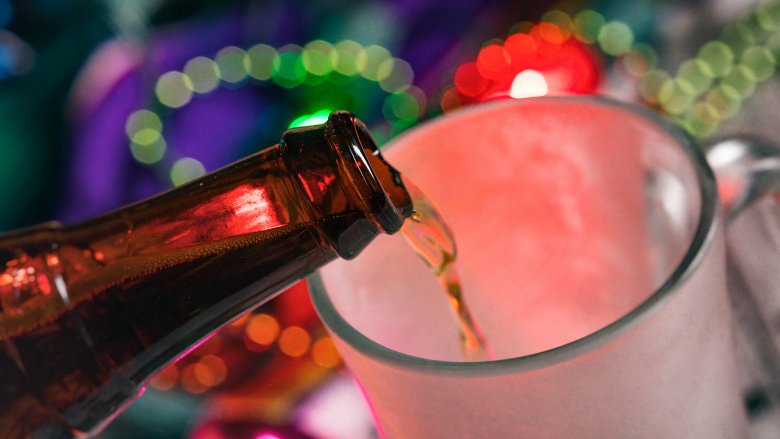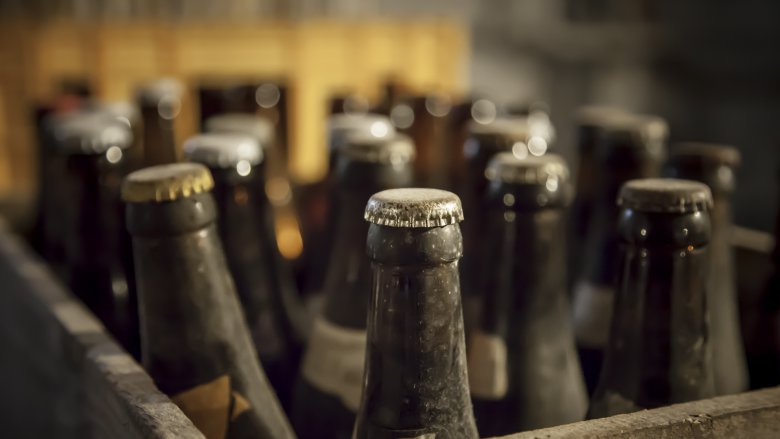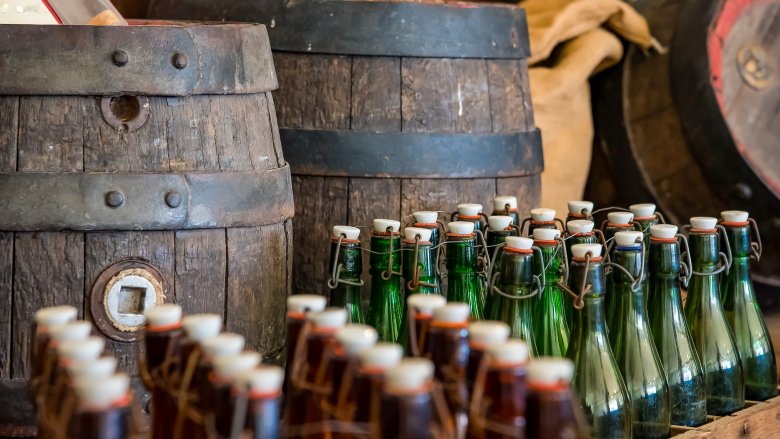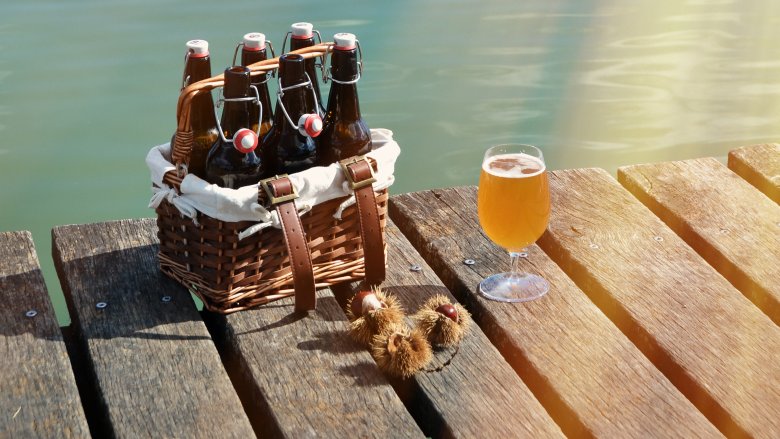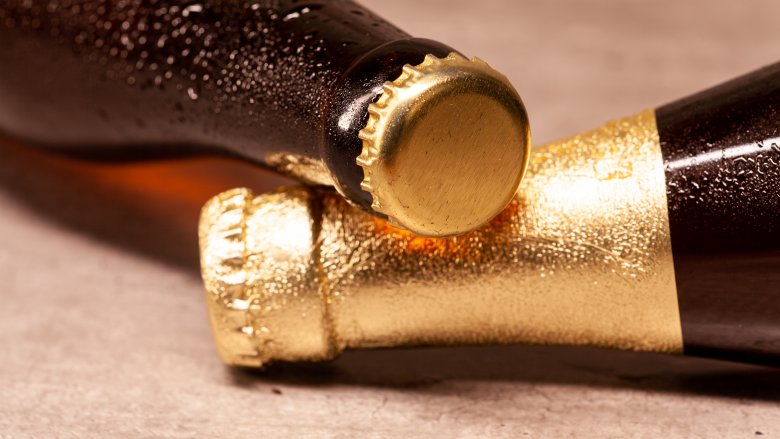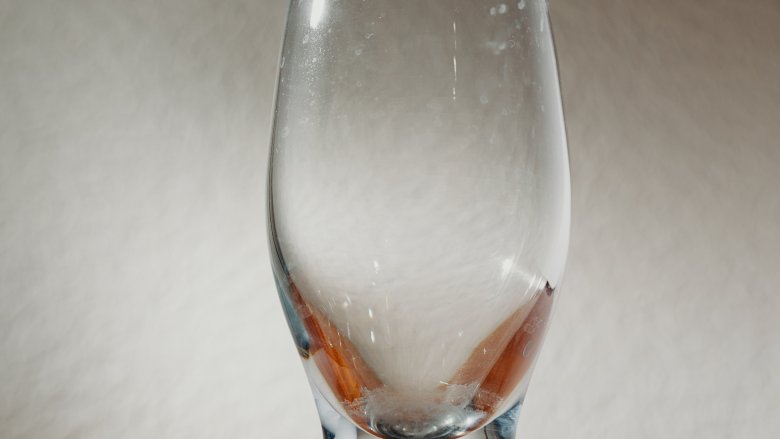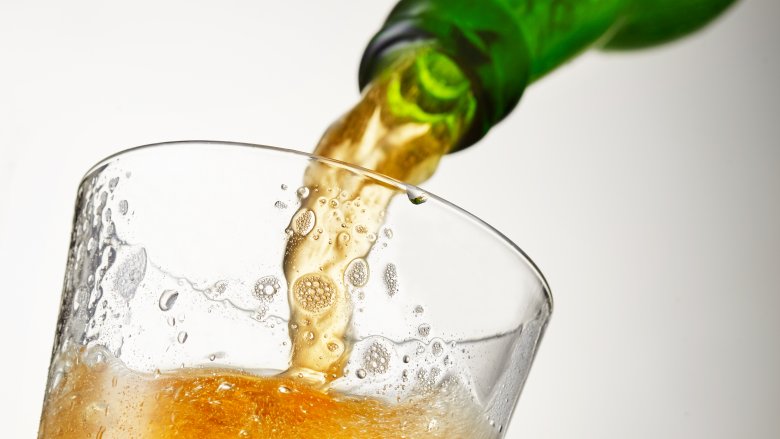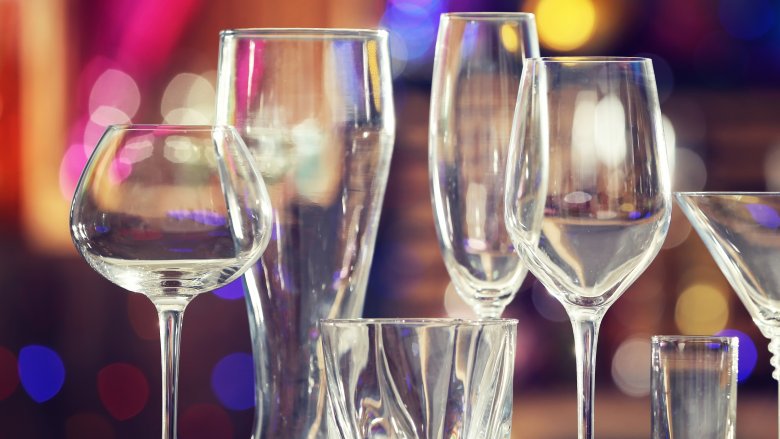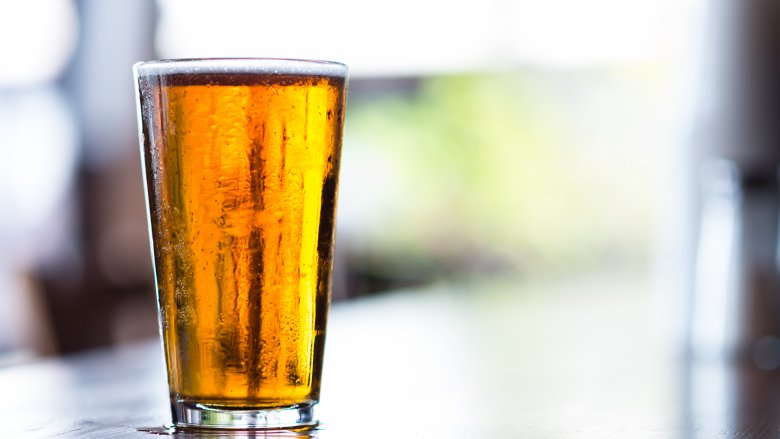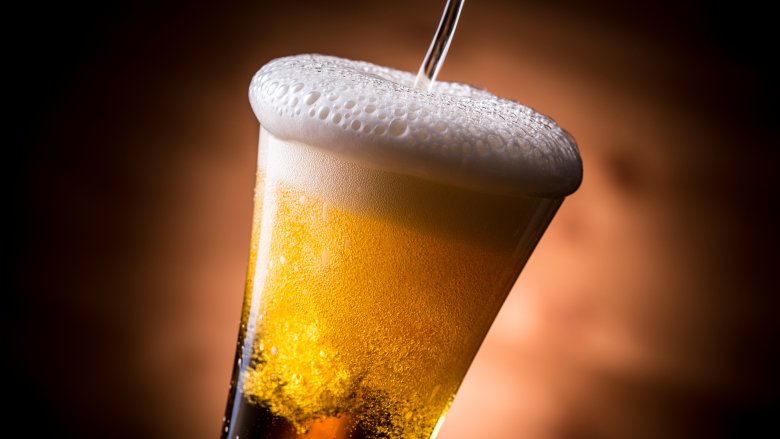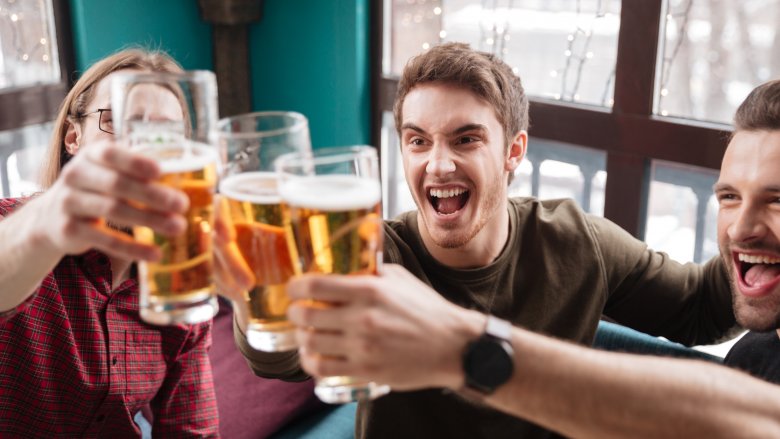This Is How You're Ruining Your Beer
Along with smelling freshly cut grass and finding an open parking space right in front of the grocery store, drinking beer is one of life's purest pleasures. But even our beloved beer can be tainted if mistreated. You may be surprised to learn a number of common beer-drinking behaviors can skunk, flatten, and otherwise turn your beer against you.
Have you ever cracked open a beer, taken a swig, and gotten a mouthful of skunky suds? Have you ever sipped a draft beer only to discover it had gone warm a third of the way through? Have you drank a stout out of a Hefeweizen glass?
If you answered yes to any of the aforementioned questions, we feel your pain. In addition to puppies abandoned on Christmas, a ruined beer is one of the life's most heartbreaking experiences. Protect your precious ales, lagers, and IPAs from destruction. Avoid these common ways you're ruining your beer.
You're drinking it ice cold and/or in a frosty mug
Pop by your average dive bar, and you're as likely to spot a sign advertising "ice-cold beer" as you are a freezer full of frosty mugs. You might even notice a jukebox blaring the Grateful Dead's, "I was down by Bondi Pier, drinkin' tubes of ice cold beer". Or glimpse that Coors commercial — you know, the one with Ice Cube?— on the TV.
As Americans, we have been conditioned by society, marketing, and pop culture to believe that beer ought to be served at frigid temperatures, preferably in a frosty pint glass. As beer experts have long been trying to warn us, however, serving suds too cold can compromise the flavor. At cold temperatures, the key aromatic compounds in beer are prevented from volatilizing and releasing those fragrant aromas of pine or chocolate or whatever. At the same time, a just-out-of-freezer pint glass can numb the palate.
The one exception to this anti-cold-and-frosty glass rule is your typical mass-produced lagers which don't have much flavor to lose in the first place. But when it comes to craft beers, low temperatures and frosty mugs can dull the flavors these beers were lovingly brewed with. The ideal temperature to serve beer may vary by variety; for example, wheats and lambics should be served from 40 to 50 degrees Fahrenheit while stouts and porters should be served between 45 and 55 degrees.
You're storing it too long
Rarely does one purchase a six-pack that isn't completed by the following Monday. But if you do happen to forget about a stray bottle or two that's been shoved to the back of your refrigerator, you shouldn't necessarily crack it open when you discover it months later.
Unlike wine or liquor, beer can't sit around for an indefinite amount of time. Whether bottled or canned, most beer lasts an average of six to nine months — though how long it lasts varies a great deal from beer to beer. IPAs and craft beers should be the first to drink, since they're also usually the first to turn.
To determine a beer's age, you can sometimes look to the date stamped onto the bottle or can. Dates are often listed in the Julian date format and typically refer to the day the beer was bottled or canned unless otherwise indicated. Unfortunately, the location of the stamp (and how to break its code) is not always easy to decipher. For that, sites like FreshBeerOnly.com can help you figure it out.
Note that since breweries are not legally obligated to provide brewing or expiry dates, some do not include a date stamp on their products.
You're storing it warm
When storing beer, there are things you can do to lengthen and shorten its lifespan. One of the most effective strategies for keeping your beer fresh is keeping it cool — ideally, around 38 degrees Fahrenheit and no hotter than 45 degrees. Just make sure you serve them at their appropriate proper temperature, which is definitely less cool than they should be stored. Your refrigerator is best, but a cold, dark cellar will do if you're short on space.
On the other hand, storing your beer in a warm pantry, garage, or the trunk of your car allows it to deteriorate faster. By neglecting to refrigerate beers, you can accelerate the aging process and foster the growth of weird flavors.
If beers are kept at higher temperatures, the negative impacts are even more pronounced. Letting a case go hot for even a day can result in oxidation, which in turn yields a stale beer taste that is distinctly reminiscent of cardboard, wet paper, or metal.
Exposing it to light
By storing your case in a sunny spot, you are not only risking accelerated aging because of warmer temperatures. You're also placing it at risk of becoming "light-struck" or skunked — a chemical reaction that causes beer to taste and smell (you guessed it) like a skunk.
The unfortunate phenomenon occurs when beer is exposed to light. Beer pulls much of its flavor from hops, which release iso-alpha acids during the brewing process. Sunlight and even fluorescent lighting can cause the iso-alpha acids to breakdown and combine with sulfur components to create 3-methyl-2-butene-1-thiol, a compound that is nearly identical to that exists in the anal glands of skunks.
Spare your beer from this nasty fate by storing it in a cool, dark place. You should also stick to buying cans or beers in brown and amber glasses, as clear bottles do a poor job of filtering UV light and green bottles only slightly better. Avoid purchasing beers from stores when beers are kept near windows or against a lighted door.
Storing it on its side
Unlike wine bottles, beer bottles should be served upright rather than laid on their sides.
There are a few compelling reasons to keep your beer bottle propped upright in the fridge. For one, this keeps your beer from being in constant contact with the metal cap or cork, which can impact the taste of your beer by leaving behind unwanted moldy, musty, or metallic flavors.
Another reason has to do with the yeast sediment found in certain craft beers. Yeast is integral to the process of fermentation, helping to convert sugar into ethyl alcohol and carbon dioxide gas. Although many breweries filter it out, some microbreweries allow yeast sediment to remain in their final product. The sediment in bottles is meant to settle to the bottom so it does not become agitated when you move and drink it. Storing a bottle horizontal can cause yeast sediment to stick to its side, giving an otherwise glorious beer a peculiar flavor when the bottle is titled right-side-up again.
You're drinking out of dirty glasses
Drinking out of a dirty beer glass isn't only icky. It can also corrupt the flavor, aroma, and entire experience of drinking. The impact of dirty glassware may depend on the type of residue lingering on its sides and bottom.
For example, if you drink out of a glass with soap residue or sanitizer, you may notice a chemically aroma or flavor. Food and other contaminants, too, can muddle the taste of a beer. No matter the type of residue, a dirty glass will result in a premature loss of your beer's aromatic head.
Of course, it isn't always easy to spot a dirty glass, barring ones with blatant lipstick stains and food floaties. One handy trick to determine whether your glass has been contaminated is to observe the behaviors of the carbonated bubbles. If you notice bubbles travel straight up to the head of the beer, your glass is clean But if you notice the bubbles cling to the walls of the glass, it means they're getting caught on its residue and you've got yourself a dirty glass.
You're pouring it wrong
For a deceptively simple-seeming act, pouring a beer is a delicate and precarious technique. For years, beer drinkers and bartenders strove to pour a beer with little or no foam — until one Master Cicerone showed us the error of our ways.
As beer nerd Max Bakker explained, it's advisable to allow a small amount of foam on top of your pour. Without freeing any foam, the CO2 remains trapped in the liquid. After you drink your beer and eat, the C02 releases airy bubbles in your stomach and causes bloat and feeling of excessive fullness. Alternatively, if your pour leaves a thin head of foam, the C02 bubbles escape outside of your stomach.
The way you pour can also have an effect on its taste sensation. Leaving behind a soft head of foam leaves a fragrant head, which preps your palate to receive the beer's flavors.
To pour a beer correctly, start by giving your glass a rinse to reduce the friction of the pour. A smoother pour will bring more aroma to the head of the beer. Then, tilt the glass at a 45 degree angle before beginning pouring. About halfway through, straighten the glass and pour the second half of the beer into the center to allow a half- to a half-inch of foam.
You're drinking out of the wrong glass
Here's another seemingly harmless practice that can sully your suds: serving your beer in improper glassware.
The type of glass you use can alter the appearance, aroma, and speed with which you drink your beer. Your beer glass influences the color and shine of your beer and controls how aromas are directed towards your nose. A wide-mouth glass may promote big gulps while a smaller mouth encourages daintier sips.
To elevate your beer drinking experience, pair the right beer with the right beer glass. For example, a tulip glass is great at directing the aromas of flavorful, hoppy beers right to your nasal passage. A pilsner glass can help accentuate the clarity of a pilsner. A large, tall glass with a slim base and a wider top (a weizen) can help display the color and enhance the carbonation wheat beers. A curvy, squat snifter can help capture the scents of barley wines, Belgian pale ales, and Russian imperial stouts.
You're drinking out of a pint glass, ever
One of the most ubiquitous glasses at bars, pint glasses are actually the worst type of glassware you could choose for your beer. The case against serving beer in pint glasses is a long one. First of all, they aren't designed for beer. Originally called the "shaker pint," pint glasses were invented to shake up cocktails and not to be globbed by lips. The pint glass's design makes its ill-suited for beer-drinking, forcing you to warm the glass with your hand and making you more likely to topple it over than you might be with a beer with a wider bottom. The wide mouth of the pint glass lets the foam disparate and the aroma of the beer escape around your face rather than funneling it towards your nose. The large mouth, combined with the straight sides, also allows the beer to grow flat faster.
Finally, even as beer lovers, we can agree that the pint-size pour is simply too large for many modern beers. If you are drinking a beer with a high alcohol volume from pint glass, drinking at a moderate pace might let the beer go warm or flat before you can finish.
Try swapping the standard pint glass for a nonic pint glasses, a common feature in British pubs with a thinner rim and a bulge for enhanced grip.
You're drinking from a dirty draft line
Draft lines need to be cleaned at least every two weeks, as well as every time a bar a changes the line from one kind of beer to another. Unfortunately, there are many bars that are oblivious — or uncaring — about the importance of draft line quality control.
Without routine and proper cleaning, beer systems accumulate microbes, proteins, and mineral deposits.
The material that builds up in a dirty tap can give your pint a sour or buttery flavor. Beer from dirty lines is unlikely to make you sick because beer acts as an antiseptic, though there have been some reports of gastro infections and headaches from beer drinkers claiming to have been served dirty beer.
Beyond having a sour or buttery flavor, a beer poured from a dirty tap may seem flat and quickly lose its head. If you are sipping suds that exhibit any of these signs, you should absolutely feel justified in sending it back, just as you would dirty food. Any good bartender will interpret this as a sign that it's time to clean the lines, so you're sparing future customers from a similarly unpleasant experience and will be a hero to beer drinkers everywhere.
You're drinking on an empty stomach
Drinking beer on an empty stomach might not ruin the flavor, aroma, or carbonation of your beer. But can be sully the entire experience of drinking.
"Never drink on an empty stomach" is one of those age-old adages that sometimes gets ignored. Drinking before you've eaten in a while tends to accelerate intoxication. The science behind this is simple: when your belly is lined with grub, food impedes the passage of alcohol from your stomach to your small intestine. The longer your beer remains in your tummy, the slower it will be absorbed.
On the other hand, and empty stomach invites booze to flow directly into the bloodstream. Once the booze hits the bloodstream, the effects of intoxication are amplified. As the alcohol rapidly permeates the bloodstream, you'll experience a decrease in pulse rate and blood pressure. Experiencing a more pronounced loss of control, you'll be more likely to flirt with the waitstaff and choose Eminem's Lose Yourself as your karaoke number.
Perhaps worst of all, is the reality that without eating before enjoying a beer, your blood level is more likely to exceed the legal blood-alcohol all limit for driving. Loss of control and tummy aches are a reasons enough to avoid drinking on an empty stomach, but putting yourself (and others) in danger is the most important one of all.
To ensure pleasurable, safe drinking experience, line that belly with carbs, proteins, and healthy fats.

